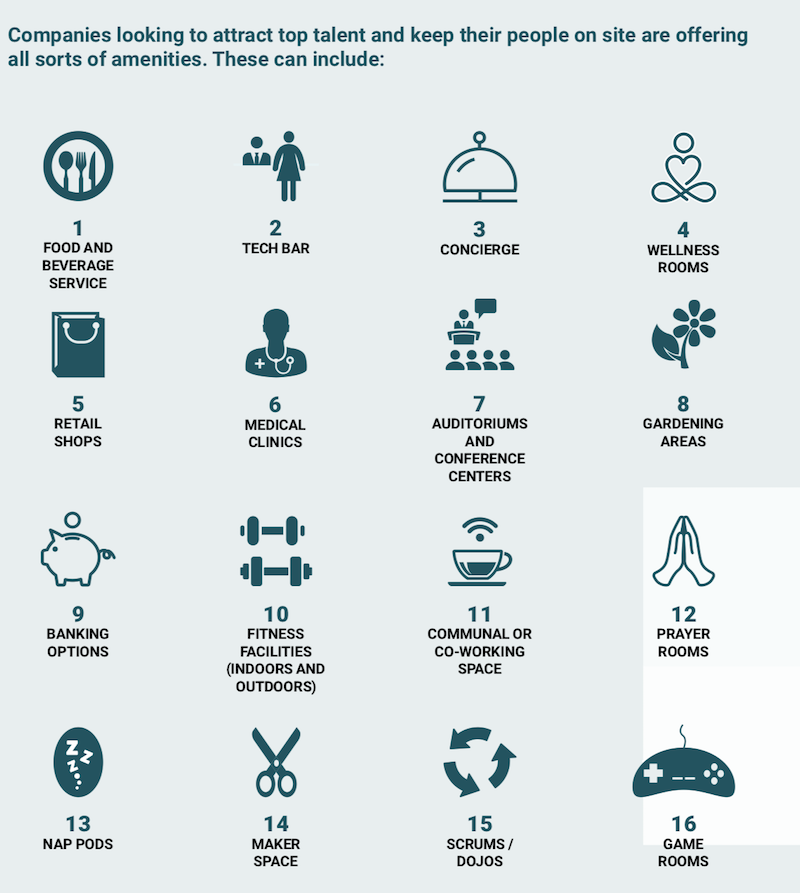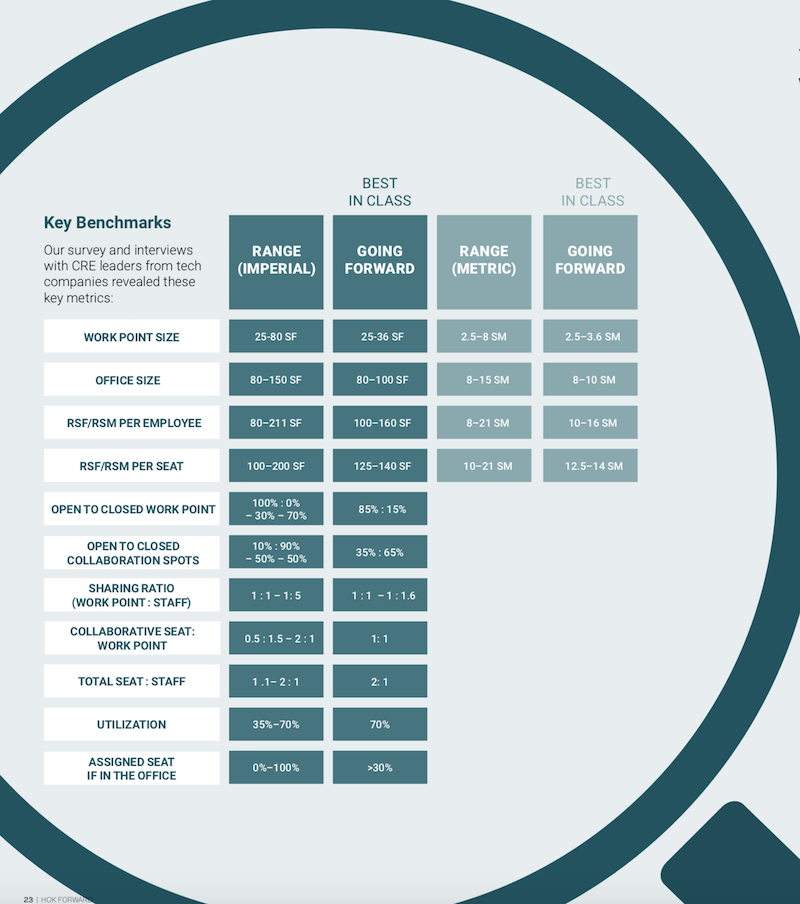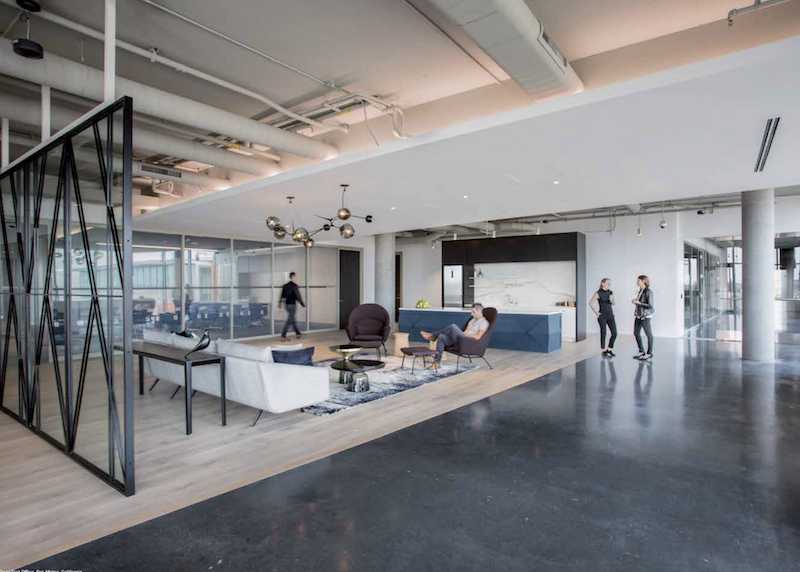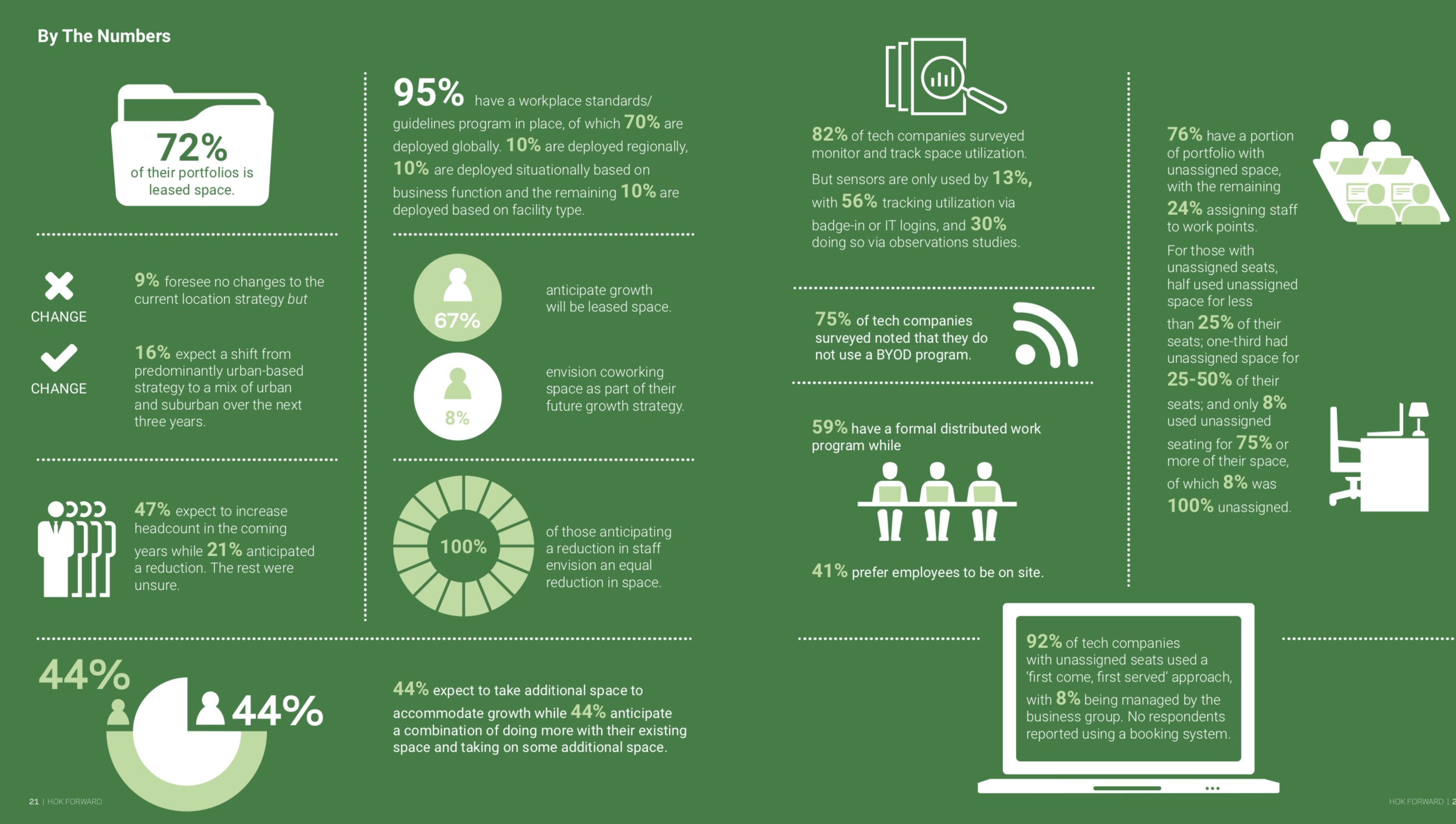How are leading tech firm responding to their workplace challenges? That’s a question that HOK, the global design firm, examines in “HOK Forward: Tech Workplace Takes Center Stage,” an 83-page report based on input from the firm’s Workplace leadership and global delivery network partners.
As part of its research to identify best practices, HOK’s team interviewed a who’s who of end-user tech companies, including Cisco Systems, Google, IBM, Microsoft, Nokia, Spotify USA, and T-Mobile.
One of the report’s observations is that tech is now all-pervasive in the workplace. “We are quickly evolving toward an era in which tech is not just a discrete sector but a foundational element of all businesses,” the report states. ”More and more companies are considering themselves ‘tech’ companies regardless of the sector they are in.”
The report notes that as tech companies expand into traditional industries, they often have a competitive advantage because they fall outside the purview of state and federal regulations. However, that regulatory climate is changing, as options for nascent technologies are defined and sometimes restricted, and bigness is no longer seen as an unassailable virtue.
The HOK report, based on input from the firm's Workplace leadership and global delivery partners, portrays a tech industry that is weighing all kinds of factors that might enhance the user experience. (Click for larger image) Image: HOK Forward report
There is also the question of whether technology is, inadvertently, accelerating the expected obsolescence of businesses. Globally, the average life expectancy of a company is less than 20 years. Up to 80% of today’s businesses may not exist in 10 years, states the report.
On top of—or, perhaps, because of—that churn, nearly half of all global employers are struggling to fill positions. Consequently, Tech employers are enticing professionals to join their organizations from other sectors. “To ensure that their people remain valuable, productive and engaged, tech employers must adopt retraining and redeployment strategies,” the report states.
In this high growth sector, HOK’s survey portrays an industry whose companies tend to lease in urban environments. These companies continue to increase their headcounts, but envision accommodating more people within their existing footprint before deciding to expand. More than two-fifths (43%) of companies polled prefer to have employees on-site, and are designing their environments to encourage synergy, ideation, and speed to market.

The right mix of amenities is critical to creating a workplace that foments innovation and productivity. Image: HOK Forward report
The cost of real estate—the cost per sf for tech office space ranges from $80 to $300, and averages around $190—and time spent at the office continue to be the most important factors influencing workspace allocation. These companies’ top priorities include enhancing the employee experience and creating flexible spaces.
While tech companies insist that they value sustainable design, 87% said they wouldn’t seek formal LEED certification for their workplaces, and—here’s a stunner—92% did not intend to seek formal WELL certification for workplace wellness.
That being said, amenities are evolving: Companies looking to attract and retain top talent now offer everything from nap pods and wellness rooms to medical clinics and maker spaces.
“Smart“ workspaces, tracked by networks of sensors, are increasing, too, as designers and clients continue to learn how to leverage data in order to optimize and right-size space that reflects the company’s culture, work style, mobility profiles, and business goals.
The report provides a wealth of case studies that illustrate many of its findings. It also offers readers a list of “priority actions” that revolve around flexibility, employment empowerment, training, and “leveraging the contingent workforce.”
The report predicts that the next generation of high-performance tech workplaces will function as engagement centers and dynamic hubs where people gather, connect and innovate.

Some of the key office metrics, gleaned from interviews with leading tech companies. Image: HOK Forward report
“By focusing on human-centric metrics and thinking outside the box, we can create resilient tech workplaces that adapt to whatever the future may bring. We need to design this next- generation workspace with courage if we want to keep pace and truly transform the work experience.”
The report recommends 10 “focus areas” for growth-minded tech companies. They must create a “curated” workplace that emphasize innovation, amenities, and occupant wellbeing, which includes giving workers greater control over their work environments.
Companies should also be looking beyond sustainability—and toward net-zero energy and water, biophilia, and human health. They should also be using sensors more to gather data in order to track employee patterns and preferences.
HOK’s report advocates that companies rethink the suburban campus of the past and move toward a “new urban model” that emphasizes “blended, mixed-use environments that are revitalizing urban zones and catering to neo-urbanites.
The conundrum of this recommendation, however, is that building offices in urban centers is challenging and expensive. In addition, while the population migration to cities is “unprecedented,” a big portion of the middle class—“the bedrock of a city’s workforce,” acknowledges the report—continues to relocate to the suburbs, “posing additional challenges for urban locations that aspire to serve as thriving work centers.”
Related Stories
| Oct 13, 2010
HQ renovations aim for modern look
Gerner Kronick + Valcarcel Architects’ renovations to the Commonwealth Bank of Australia’s New York City headquarters will feature a reworked reception lobby with back-painted glass, silk-screened logos, and a video wall.
| Oct 13, 2010
County building aims for the sun, shade
The 187,032-sf East County Hall of Justice in Dublin, Calif., will be oriented to take advantage of daylighting, with exterior sunshades preventing unwanted heat gain and glare. The building is targeting LEED Silver. Strong horizontal massing helps both buildings better match their low-rise and residential neighbors.
| Oct 12, 2010
Guardian Building, Detroit, Mich.
27th Annual Reconstruction Awards—Special Recognition. The relocation and consolidation of hundreds of employees from seven departments of Wayne County, Mich., into the historic Guardian Building in downtown Detroit is a refreshing tale of smart government planning and clever financial management that will benefit taxpayers in the economically distressed region for years to come.
| Oct 12, 2010
The Watch Factory, Waltham, Mass.
27th Annual Reconstruction Awards — Gold Award. When the Boston Watch Company opened its factory in 1854 on the banks of the Charles River in Waltham, Mass., the area was far enough away from the dust, dirt, and grime of Boston to safely assemble delicate watch parts.
| Oct 12, 2010
Building 13 Naval Station, Great Lakes, Ill.
27th Annual Reconstruction Awards—Gold Award. Designed by Chicago architect Jarvis Hunt and constructed in 1903, Building 13 is one of 39 structures within the Great Lakes Historic District at Naval Station Great Lakes, Ill.
| Oct 12, 2010
From ‘Plain Box’ to Community Asset
The Mid-Ohio Foodbank helps provide 55,000 meals a day to the hungry. Who would guess that it was once a nondescript mattress factory?
| Oct 11, 2010
HGA wins 25-Year Award from AIA Minnesota
HGA Architects and Engineers won a 25-Year Award from AIA Minnesota for the Willow Lake Laboratory.
| Oct 8, 2010
Union Bank’S San Diego HQ awarded LEED Gold
Union Bank’s San Diego headquarters building located at 530 B Street has been awarded LEED Gold certification from the Green Building Certification Institute under the standards established by the U.S. Green Building Council. Gold status was awarded to six buildings across the United States in the most recent certification and Union Bank’s San Diego headquarters building is one of only two in California.
| Oct 6, 2010
Windows Keep Green Goals in View
The DOE's National Renewable Energy Laboratory has almost 600 window openings, and yet it's targeting LEED Platinum, net-zero energy use, and 50% improvement over ASHRAE 90.1. How the window ‘problem’ is part of the solution.
| Sep 21, 2010
New BOMA-Kingsley Report Shows Compression in Utilities and Total Operating Expenses
A new report from the Building Owners and Managers Association (BOMA) International and Kingsley Associates shows that property professionals are trimming building operating expenses to stay competitive in today’s challenging marketplace. The report, which analyzes data from BOMA International’s 2010 Experience Exchange Report® (EER), revealed a $0.09 (1.1 percent) decrease in total operating expenses for U.S. private-sector buildings during 2009.

















